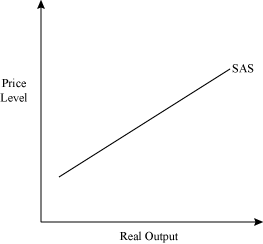|
|
Price Level
|
Wage Level
|
Employment
Level
|
Implications
|
|
Keynesian or
Horizontal
|
Fixed
|
Fixed
|
Flexible
|
Output
depends on changes in employment.
|
|
Intermediate
|
Flexible
|
Fixed
|
Flexible
|
Output
depends upon changes in price level & employment.
|
|
Classical or
vertical
|
Flexible
|
Fixed
|
Fixed
|
Output
depends on changes in price level.
|
Long run AS
·
Time long enough for wages to adjust to the price level.
·
Flexible Wage and Price level.
·
Both offset eachother.
 |
| Demand-pull Inflation |
 |
| Cost-push Inflation |

